KyushuCalanthe
Just call me Tom
- Joined
- Jan 12, 2008
- Messages
- 8,180
- Reaction score
- 462
One great fortune about living in Japan is all the orchid shows, particularly the native species. What makes them even more enjoyable is that they tend to focus on one group or species at a time. Yesterday I went to the local Calanthe society's show to see what's new this year. These plants are known as ebine. Here's a taste.
There were around 300 plants shown at a shrine in the heart of Fukuoka City. Here is the display of the largest plants.
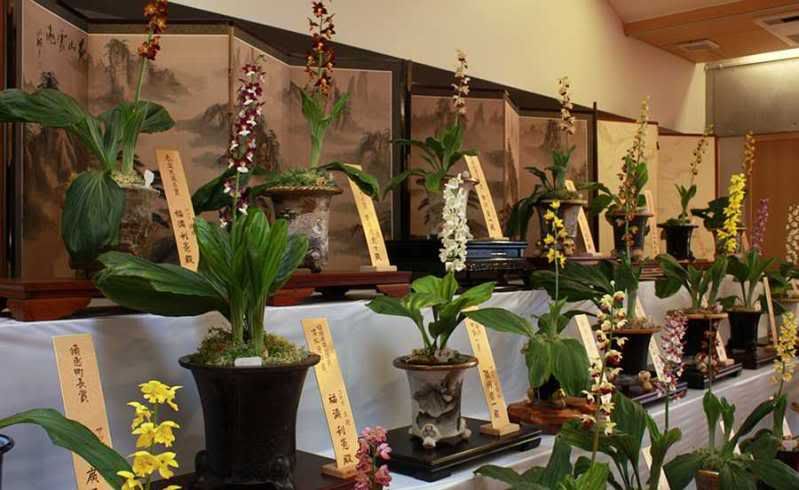
This was the largest plant at the show, standing around a meter tall. A plant of this size and quality sells for a pretty penny - well over a $1000 US and 20 years ago it would have sold for much more.
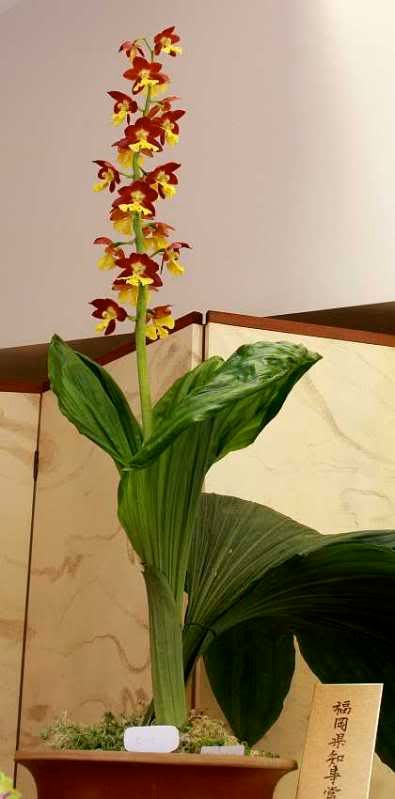
30 years ago there was a run on the wild plants especially on Kyushu. The entire ebine hobby was based on wild collected plants. These commanded crazy high prices, especially really select clones. Here is a form of C. sieboldii called 'Daikoutei' ("big emperor"), collected years ago that has been maintained. The man who collected this plant and sold back-bulb divisions off it made mind bending amounts of money on it - supposedly enough to build a large house.
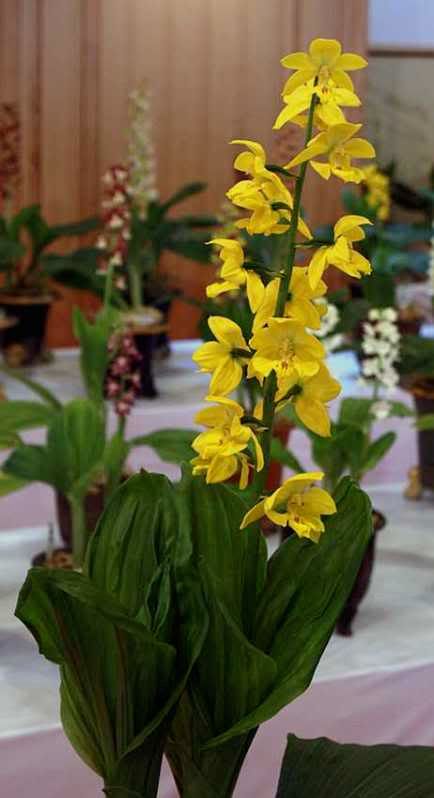
By the late 70's and early 80's whole collections of ebine were dying off wholesale. The reason was a nasty virus these plants so easily acquire and transmit. It looked as though the hobby was going to disappear, but just in time people started to micro-propagate them. So began a new era in ebine, one that lead to today's complex hybrids.
Various lines of naturally occurring hybrids lead to the formation of artificial lines mirroring the wild plants. These included forms known as Satsuma, Takane, Kozu, Hizu, and so on. Of the species, only C. sieboldii and a few unusual forms of C. discolor were maintained in any numbers within the hobby. The focus all moved towards hybrids. Nowadays the separate lines of hybrids has become very complex and overlapping, such that the growers themselves often can't be sure of the parentage except by looking it up (sound familiar?).
This flower has a strong influence of C. tricarinata. The broad lip is a desirable feature and such plants make good candidate parent plants.
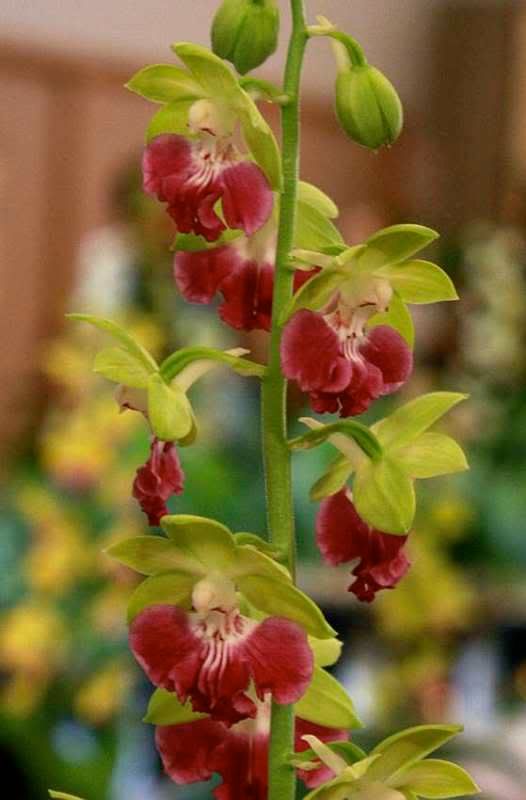
A similar flower type.
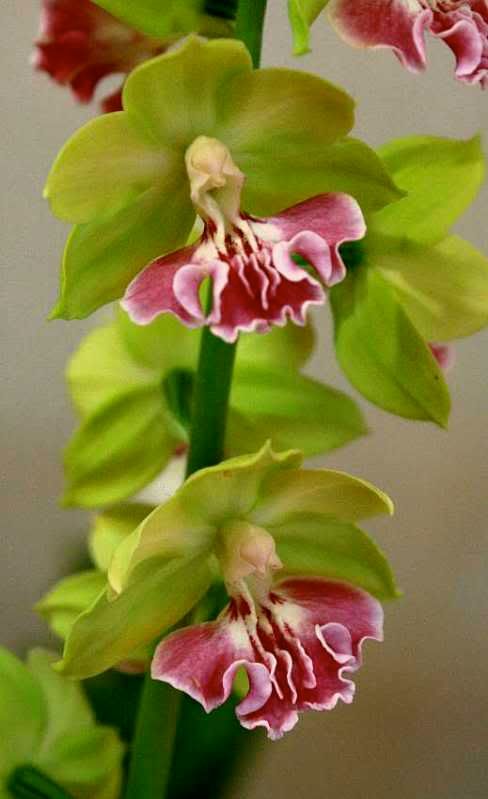
This one has definite roots in C. sieboldii, and probably is a Satsuma derived plant (dicolor x sieboldii x aristulifera). The bright orange color of this clone is unusual.
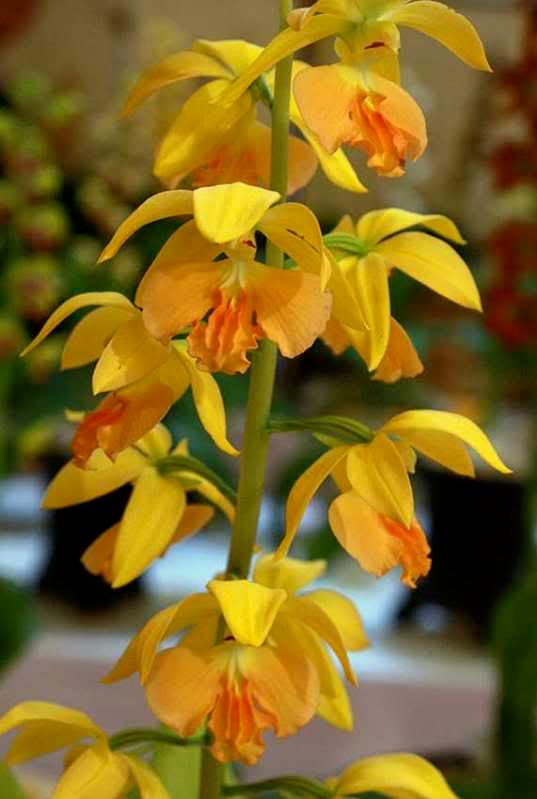
The darkest flower at the show was this beauty. Probably another Satsuma hybrid.
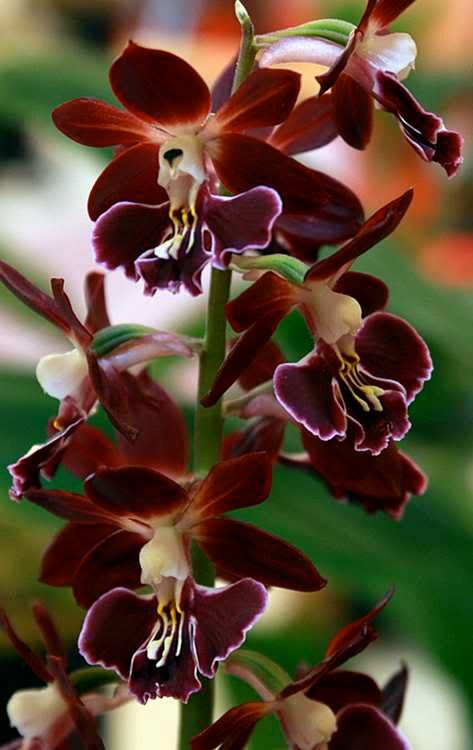
Finally, a Kozu type (izu-insularis x discolor). These are most noted for their incredible fragrance, which tends towards the floral end while many other ebine are sweet smelling. The length of the nectary is proportional to the fragrance, the bigger the more intense. Size really does matter in this case!
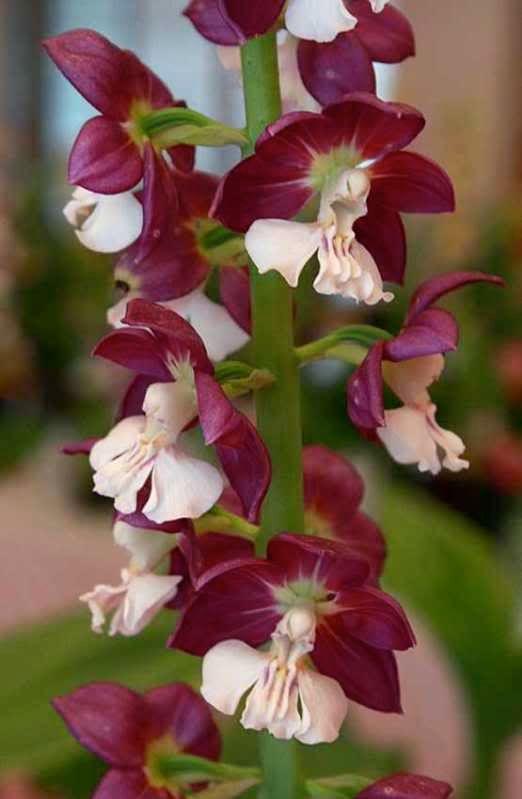
There were tons more plants and variations. These are pretty easy to grow, but disease problems are a real issue, particularly viruses. If a virused plant is detected, it must be destroyed immediately (growers burn them) and the soil and pot must be thrown away off premises. In addition, they are subject to just about any rot that comes along, though usually these can be controlled easily by cutting away the suspect parts and applying fungicide.
Lovely plants, but a bit finicky. Not for the lazy gardener!
There were around 300 plants shown at a shrine in the heart of Fukuoka City. Here is the display of the largest plants.

This was the largest plant at the show, standing around a meter tall. A plant of this size and quality sells for a pretty penny - well over a $1000 US and 20 years ago it would have sold for much more.

30 years ago there was a run on the wild plants especially on Kyushu. The entire ebine hobby was based on wild collected plants. These commanded crazy high prices, especially really select clones. Here is a form of C. sieboldii called 'Daikoutei' ("big emperor"), collected years ago that has been maintained. The man who collected this plant and sold back-bulb divisions off it made mind bending amounts of money on it - supposedly enough to build a large house.

By the late 70's and early 80's whole collections of ebine were dying off wholesale. The reason was a nasty virus these plants so easily acquire and transmit. It looked as though the hobby was going to disappear, but just in time people started to micro-propagate them. So began a new era in ebine, one that lead to today's complex hybrids.
Various lines of naturally occurring hybrids lead to the formation of artificial lines mirroring the wild plants. These included forms known as Satsuma, Takane, Kozu, Hizu, and so on. Of the species, only C. sieboldii and a few unusual forms of C. discolor were maintained in any numbers within the hobby. The focus all moved towards hybrids. Nowadays the separate lines of hybrids has become very complex and overlapping, such that the growers themselves often can't be sure of the parentage except by looking it up (sound familiar?).
This flower has a strong influence of C. tricarinata. The broad lip is a desirable feature and such plants make good candidate parent plants.

A similar flower type.

This one has definite roots in C. sieboldii, and probably is a Satsuma derived plant (dicolor x sieboldii x aristulifera). The bright orange color of this clone is unusual.

The darkest flower at the show was this beauty. Probably another Satsuma hybrid.

Finally, a Kozu type (izu-insularis x discolor). These are most noted for their incredible fragrance, which tends towards the floral end while many other ebine are sweet smelling. The length of the nectary is proportional to the fragrance, the bigger the more intense. Size really does matter in this case!

There were tons more plants and variations. These are pretty easy to grow, but disease problems are a real issue, particularly viruses. If a virused plant is detected, it must be destroyed immediately (growers burn them) and the soil and pot must be thrown away off premises. In addition, they are subject to just about any rot that comes along, though usually these can be controlled easily by cutting away the suspect parts and applying fungicide.
Lovely plants, but a bit finicky. Not for the lazy gardener!



